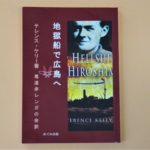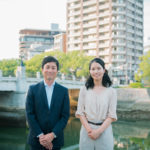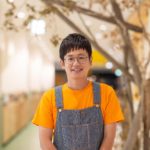To Consider Peace as a Personal Issue And as an Opportunity to Think About How We Can Live Together
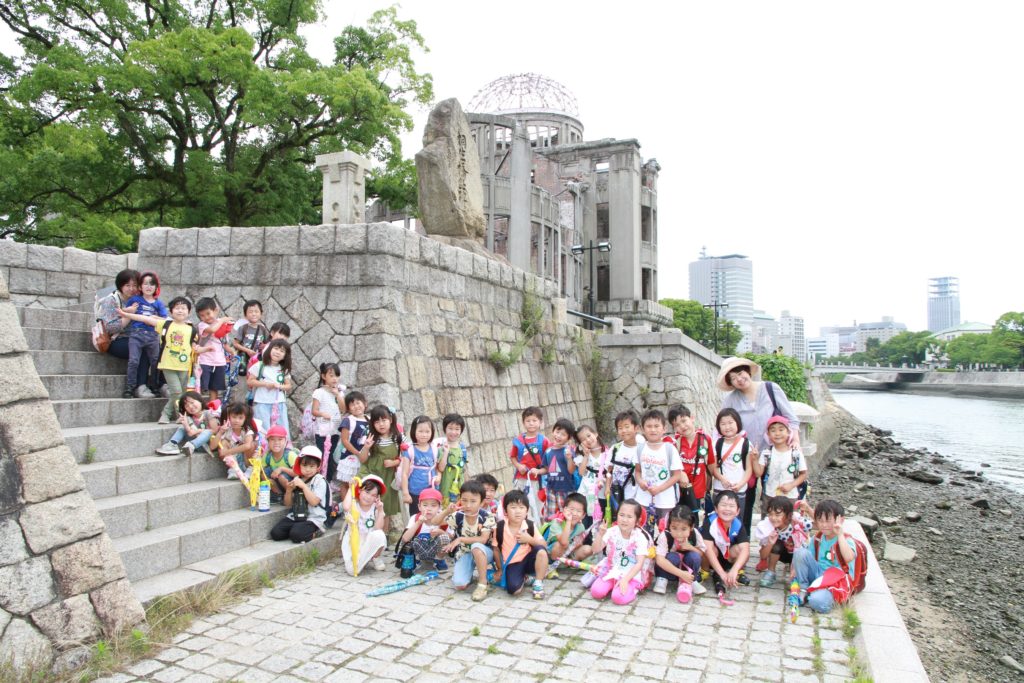
Kindergarteners from Ayame Kindergarten in a commemorative photo on the banks of the Motoyasu River in front of the Atomic Bomb Dome. This photo appears on the cover of the booklet “Creating Peace: Remembering the 75th Anniversary of the Atomic Bombing and Japan’s Defeat” (size B5, 97 pages), a collection of testimonies of war and the atomic bombing. The booklet was published by the United Church of Christ in Japan Hiroshima Ushita Church and Ayame Kindergarten. I asked Nishijima Yoshihiro, the pastor and kindergarten principal, who said, “We want to pass down the experiences of the war and the atomic bombing, and to convey the preciousness of peace to the children, the bearers of our future,” for details on the booklet and what to pass to the children.
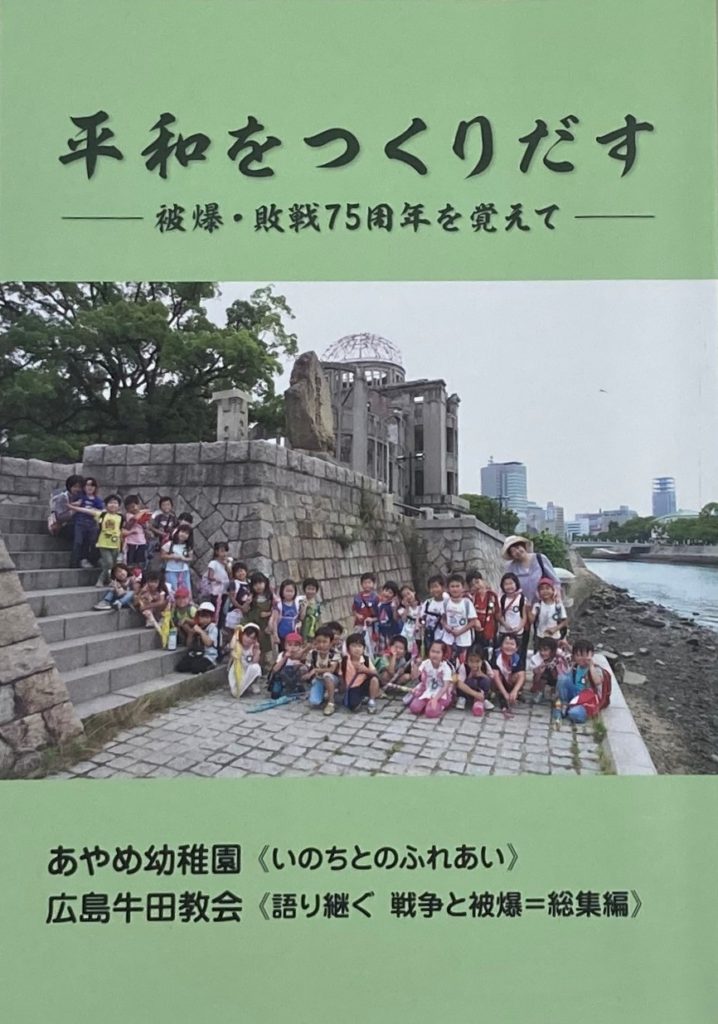
Hiroshima Ushita Church was established in 1948, right after the end of the war, by Reverend Matsumoto Takuo, the then president of Hiroshima Jogakuin University. Two years later, in 1950, the Ayame Kindergarten was established in connection with the church, taking on the mission of “raising children with peace in their hearts in order to create peace in the world.” As the kindergarten celebrated its 70th anniversary in 2020, I decided to compile a record of its activities related to peace education thus far.
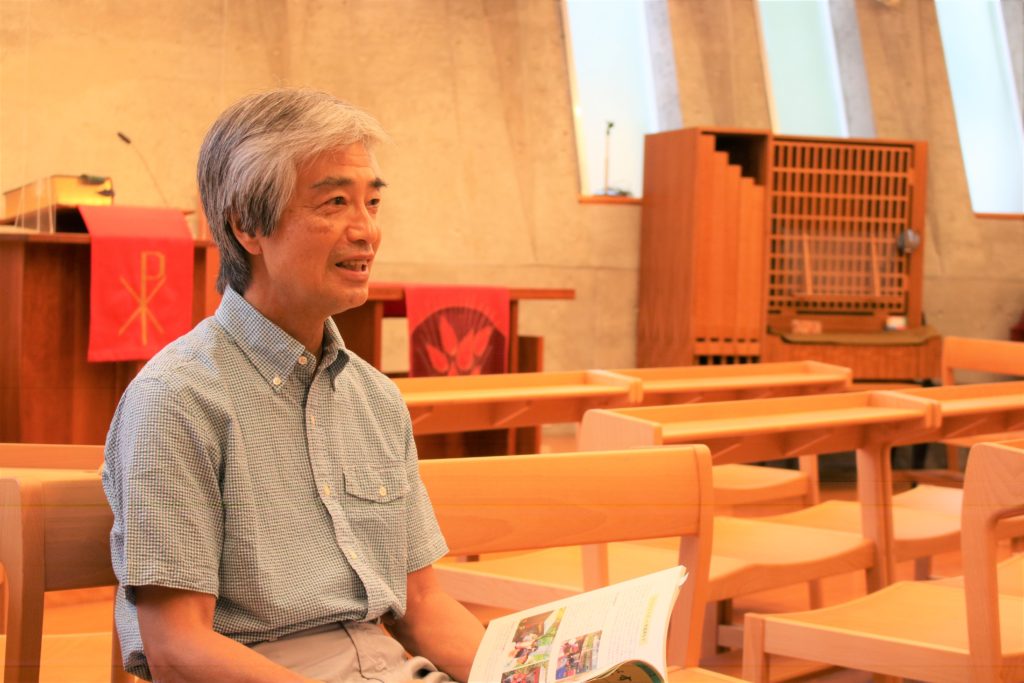
That year also marked the 75th anniversary of the atomic bombing. Up until then, we had published atomic bomb accounts by church members in publications such as the church’s bulletin, “Kusunoki,” however, with the number of atomic bomb survivors declining over time, we have felt some challenge in keeping it going. To pass on the desire for peace to the next generation, we edited the memoirs that have been published so far and added five new individuals to reach a total of 26 atomic bomb and war experiences in the booklet.
In the booklet, it was viewed as important to look at the war from various perspectives. I have also included the memoirs of a pastor from the America that dropped the bombs and from a Philippine pastor whose country was invaded by Japan, because I believe that we should be aware of our responsibility not only as victims but also as perpetrators.
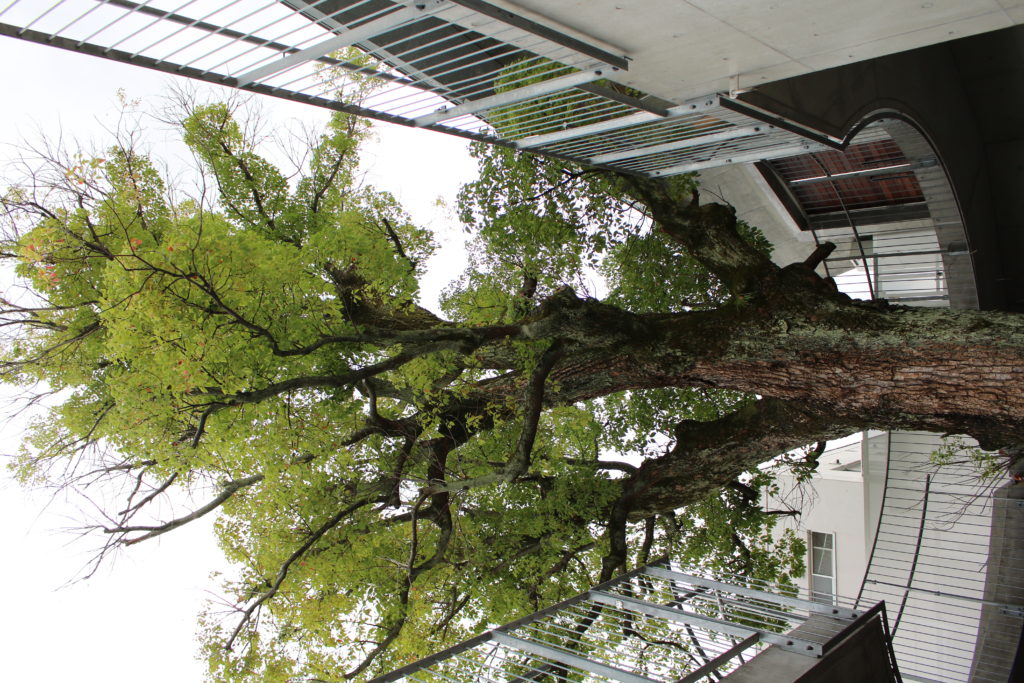
In the schoolyard of Ayame Kindergarten, there is a camphor tree that is taller than the chapel on the second floor. The tree is about 170 years old and survived the atomic bombing. In this way the children can feel touched by the bombsite Hiroshima in everyday life. It was in the 1980s that our school began to consciously engage in peace education.
Specifically, we read peace-themed picture books to the children, make large picture-story shows (kamishibai) about the experiences of the atomic bomb, make visits to the Atomic Bomb Dome and the Hiroshima Victims Memorial, and on Tanabata (Star Festival), we get bamboo branches from the “Pikadon Bamboo Grove” (Ushita, Higashi-Ku, Hiroshima City), where atomic bomb survivors fled to, and use them to decorate with. In the fall, the children go to Anrakuji Temple (Ushita, Higashi-Ku, Hiroshima City), where there is a large ginkgo tree that survived the bomb, to hear the former head priest’s story of surviving the atomic bomb, and to make art from the ginkgo leaves that the children collect. Since 2004, we have been holding gatherings for peace at the kindergarten that the children’s guardians may also attend as a special school day on August 6th. Some do think that the atomic bombing is too heavy a topic for young children. However, I think that perhaps the children feel something unique that only they can feel as children.
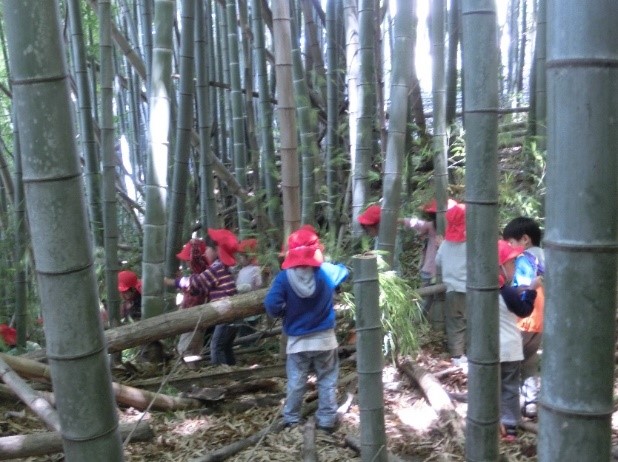
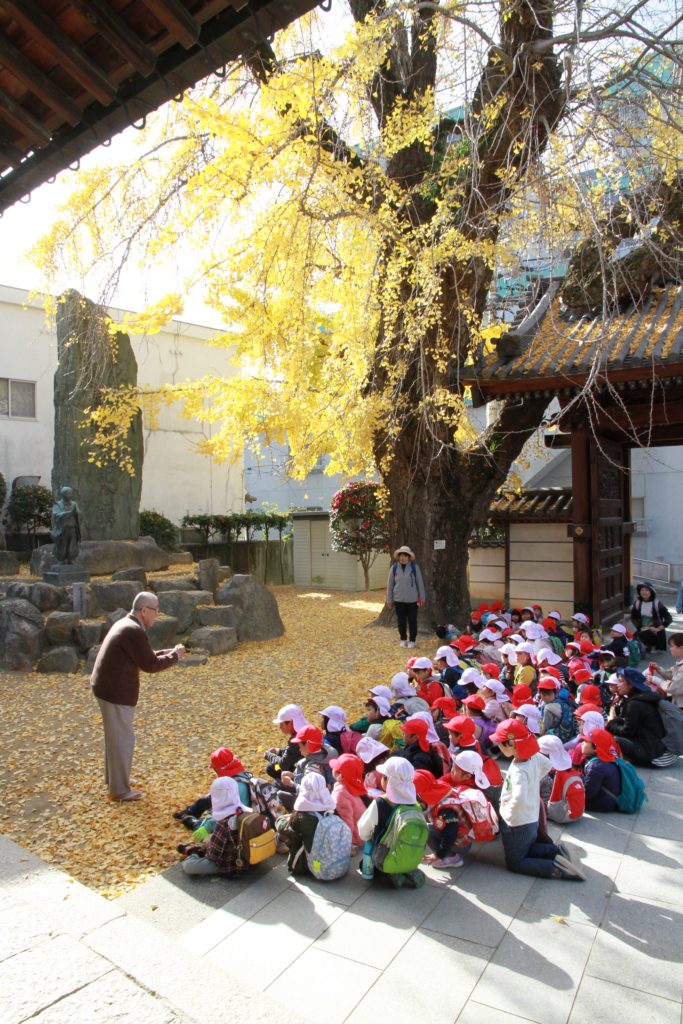

For example, when we went to the Pikadon Bamboo Grove to collect bamboo branches, I asked the kids “what do you think it was like for the people who fled here to escape?” The children responded, “the burns must have been painful,” “they must have been hungry,” and “they must have been scared without their moms.” In the bamboo grove the children can put themselves in the shoes of those who experienced the bomb. The war can stay in their hearts as if it was their own experiences. The bomb and war aren’t just things of the past. By making them understand that these events are connected to the present, we can pass down the wish for peace.
Through peace education at the kindergarten, I hope that children will learn to understand the thoughts and feelings of people from different walks of life, accept their differences, and learn how to think and see things in a way where people can live together, even if the answers are not easy to find. It is also my hope and prayer that they will always be able to feel empathy for others. Of course, we adults should be determined to do the same.
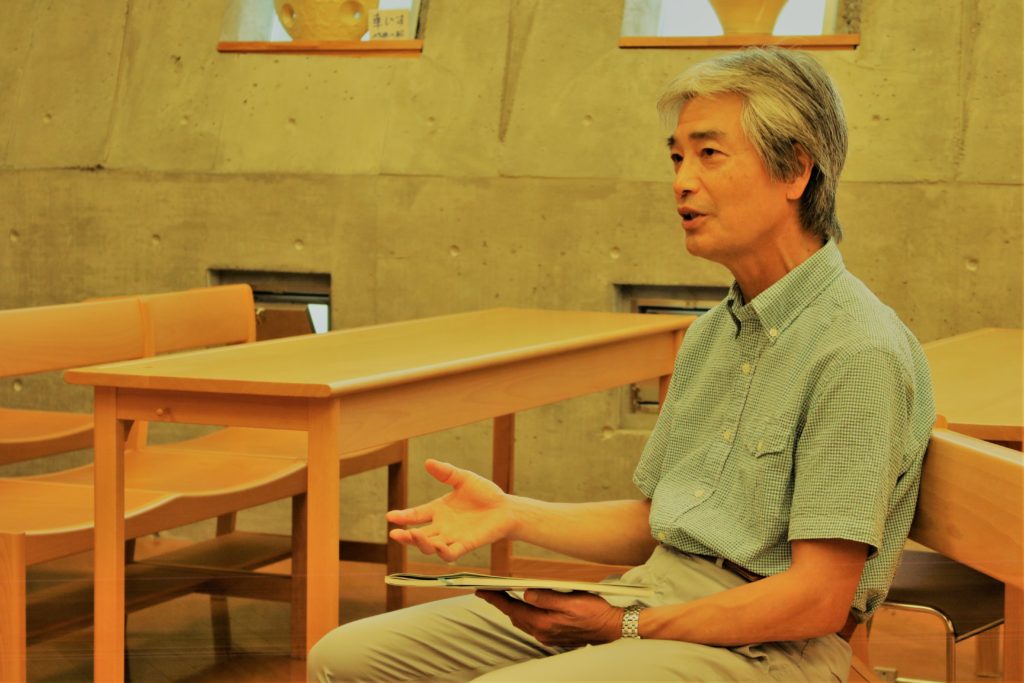
In Ushita, where the kindergarten is located, there are many parents who have been relocated to Hiroshima for work, and there are many parents who have not lived in Hiroshima before and do not know about the atomic bombing. I hope that during their stay in Hiroshima they will be exposed to the issues of peace through their children and deepen their understanding of peace through this booklet.
In my speech at the kindergarten graduation ceremony, I talked about how we are planting the seeds of peace in the hearts of the children. I asked the kids “What kind of nourishment do you think will make that seed grow big?” and the answer of “a kind heart!” was called out. I felt happy when the thought occurred to me that the hope for peace like cores is growing in the hearts of the children.
Hiroshima Ushita Church and Ayame Kindergarten will continue to call out, “Let’s make peace!”
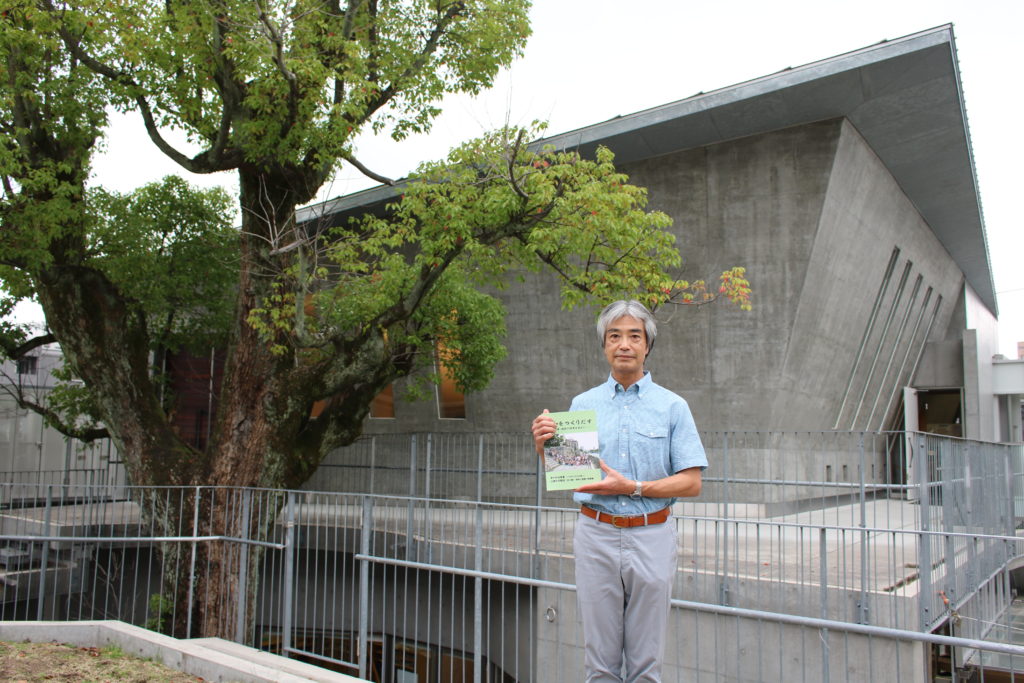
Nishijima Yoshihiro
Born in Yamaguchi Prefecture in 1958. Kwansei Gakuin University Department of Theology, completed graduate school in theology. Pastor of Hiroshima Ushita Church of The United Church of Christ in Japan and Principal of Ayame Kindergarten since 1998.
The United Church of Christ in Japan Hiroshima Ushita Church
Address: 2-7-34 Ushitanaka, Higashi-Ku, Hiroshima City
Phone number: 082-222-7727
Homepage: https://ushi-kyo.com/
Tags associated with this article



